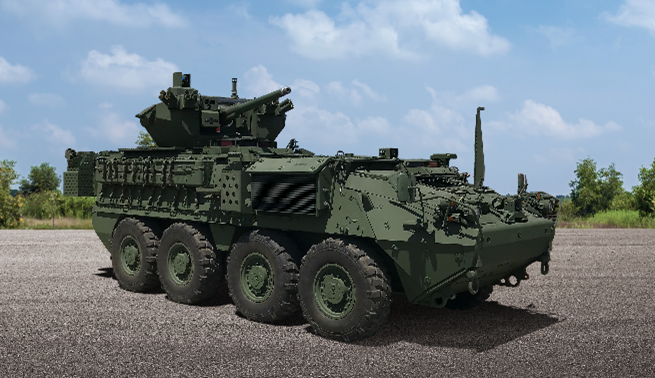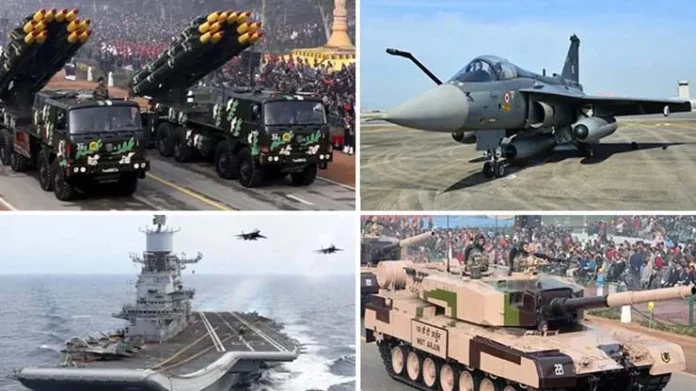AFI
SOURCE: AFI


The realm of aerospace technology, particularly the development and enhancement of fighter jets, is an arena where nations often push the boundaries of innovation. Reverse engineering has historically been a method employed by various countries to leapfrog technological gaps and bolster their military capabilities. However, India’s approach to reverse engineering fighter jets has been notably cautious, shaped by both its capabilities and its commitment to international Intellectual Property Rights (IPR) laws.
Modern fighter jets are complex systems integrating advanced materials, aerodynamics, avionics, and propulsion technologies. The process of reverse engineering such sophisticated equipment requires not just access to the hardware but also deep expertise in multiple engineering disciplines. India has made significant strides in indigenous aircraft development, like the Tejas Light Combat Aircraft, but the journey from reverse engineering to full indigenous production has been fraught with challenges. The technical intricacies of jet engines, avionics, and stealth technology, for instance, have proven particularly difficult to master through reverse engineering alone.
Continue readingSOURCE: AFI


In the realm of global military aviation, only a select few nations possess fleets of strategic bombers (SB), which are designed for long-range, deep-penetration strikes into enemy territory. Currently, these nations are the United States, Russia, and China. Notably, India, despite its significant military prowess and strategic interests, particularly in light of the regional dynamics with China, has not ventured into this domain.
India’s military doctrine has historically prioritized regional defense rather than global power projection, which strategic bombers would serve. The Indian Air Force (IAF) has focused on multi-role fighters that can handle a variety of missions from air superiority to ground attack, aligning with India’s defense needs against its immediate neighbors. The acquisition of strategic bombers would represent a significant doctrinal shift, requiring not only a change in military strategy but also substantial financial investment. Strategic bombers are expensive to acquire, operate, and maintain, and with India’s defense budget stretched across multiple modernization programs, the cost-benefit analysis has so far not favored such a move.
Continue readingSOURCE: AFI


In a gesture of goodwill and military cooperation, Pakistan has delivered an FT-7P fighter aircraft to the Sri Lankan Air Force (SLAF) in January 2025. This aircraft, a Chinese-manufactured J-7 in its export trainer configuration, was provided as a grant, highlighting the ongoing military ties between the two nations.
The FT-7P, essentially a dual-seat training variant of the F-7, has been a part of Pakistan’s Air Force inventory for training purposes. With the introduction of the more advanced JF-17B dual-seat trainer aircraft, Pakistan found itself with surplus FT-7 aircraft. These planes were previously used to train pilots destined for the F-7PG fleet, for weapons tactics training, and as adversary aircraft in simulated combat scenarios.
Continue readingSOURCE: AFI


In a significant stride towards enhancing military cooperation, the Indian Air Force (IAF) and the Royal Air Force (RAF) convened for the Executive Steering Group Meeting, also known as Air Staff Talks, in London on January 28 and 29, 2025. The two-day event was a platform for reinforcing the defence relationship between the two nations, focusing on joint training, the exchange of ideas, and professional military education.
The discussions were co-chaired by Air Vice-Marshal Suraya Marshall CBE from the RAF and Air Vice-Marshal Prajual Singh VM from the IAF. This meeting underscored the commitment of both air forces to not only maintain but also expand their mutual engagements in various military domains.
Continue readingSOURCE: AFI


The Indian Army’s evaluation of the Stryker Armored Personnel Carrier (APC) has reached its conclusion, with trials being conducted in the challenging high-altitude terrain of Ladakh in September 2024, according to recent media reports.
The trials took place in Ladakh, a region known for its extreme climatic conditions and high-altitude challenges, providing a rigorous test for the Stryker’s capabilities. The evaluation spanned three weeks, where the Stryker was subjected to a variety of tests to gauge its mobility, durability, and combat effectiveness in an environment similar to potential operational areas along India’s borders.
Continue readingSOURCE: AFI


In a recent feature, Russian media outlet Sputnik has extolled the capabilities of the Su-57, Russia’s advanced fifth-generation fighter jet, positioning it as a formidable force in modern aerial warfare. According to Sputnik, the Su-57, which celebrated its maiden flight 15 years ago, is not just a match but an outright superior to its international counterparts.
Sputnik describes the Su-57 as a dual-role aircraft, adept at both attack and fighter missions. Its design incorporates stealth technology, making it “nearly invisible” to enemy radar systems while boasting exceptional maneuverability. The jet is claimed to have a service ceiling of 20 kilometers, a range extending up to 5,500 kilometers, and a top speed reaching 2,470 kilometers per hour, which positions it as one of the fastest in its class.
Continue readingSOURCE: AFI


In this year’s Aero India show, set to be held in Bengaluru, the participation of the Indian Air Force’s acclaimed Sarang display team hangs in the balance. The uncertainty stems from the grounding of all 330 HAL Dhruv advanced light helicopters (ALH Dhruv) after a concerning crash in January.
Sarang, renowned for its intricate and visually stunning aerial maneuvers, has been a staple attraction at Aero India, contributing to the spectacle that draws aviation enthusiasts from around the globe. This biennial event has traditionally featured both Sarang and the Suryakiran aerobatic team, showcasing India’s aerial prowess alongside international teams.
Continue readingSOURCE: AFI


In a significant upgrade to their combat gear, Indian Army troops deployed at the strategically vital Uri sector in Jammu and Kashmir have been observed sporting new Armasen plate carriers alongside advanced Level III+ Advanced Combat Helmets (ACH). This development points to a continuing effort by the Indian military to bolster the protection and operational effectiveness of its soldiers in forward areas.
The troops were equipped with the Armasen plate carriers, known for their robust design and ergonomic features. These carriers are designed to accommodate various types of ballistic plates, offering flexibility in terms of protection levels. The Armasen gear, particularly the SF RIG (Special Forces Rapid Interchangeable Gear) and GRIP Combat Belt, is noted for its compatibility with both standard and custom ballistic plates, enhancing mobility and comfort in combat situations.
Continue readingSOURCE: AFI


In a significant step towards bolstering indigenous capabilities in drone technology, Indian startup IG Drones has announced the sale of its Vertical Take-Off and Landing (VTOL) and First-Person View (FPV) drones to the Indian Army. This development aligns with India’s push for self-reliance in defense manufacturing under the ‘Make in India’ initiative and comes amid rising concerns over the use of foreign components in critical defense systems.
The deal is particularly noteworthy in light of an incident last year, where an Indian Army drone, suspected to contain Chinese-manufactured components, was reportedly hijacked near the Line of Control (LoC). The incident raised alarms about the vulnerabilities posed by foreign-origin systems, including risks of cyber espionage and compromised operational security.
Continue readingSOURCE: AFI


In a significant leap forward for India’s propulsion technology, SpaceFields has announced the successful hot-firing of its pioneering AeroSpike solid rocket engine. This achievement marks a new chapter in the country’s aerospace capabilities, demonstrating both innovation and practical application in rocket propulsion.
The static-test campaign took place at SpaceFields’ Propulsion test facility located at the Indian Institute of Science (IISc) in Challakere, Chitradurga district. The AeroSpike engine, with its unique design, features a 168mm diameter and a length of 1.36 meters, employing an HTPB-based composite propellant known for its efficiency and stability.
Continue readingSOURCE: AFI


As India strives to achieve self-reliance in defense manufacturing under the Atmanirbhar Bharat initiative, it is time to establish a dedicated Research and Development (R&D) fund for the defense sector. This fund should not only cater to state-run defense organizations like DRDO but also extend support to the private sector, startups, and academia. A well-structured R&D fund can unlock the potential of India’s defense ecosystem, fostering innovation and accelerating the development of cutting-edge military technologies.
India’s defense sector has often lagged in technological innovation due to limited resources and reliance on imports. A dedicated R&D fund would encourage indigenous development of advanced systems like AI, hypersonics, cyber defense, and UAVs.
Continue readingSOURCE: AFI


In a startling incident at a Russian airport, security officials have seized a bottle containing radioactive Thorium-232, with radiation levels measured at fifteen times the permissible limit. The substance was found in the luggage of a tourist who claimed innocence, stating that the material was simply “volcanic beach sand” collected during her visit to India.
The incident unfolded at Moscow’s Domodedovo Airport, where routine security checks have become more stringent following global security concerns. As part of these measures, the bottle was detected during a scan that triggered a radiation alert. Upon further examination, it was confirmed that the contents were indeed Thorium-232, a naturally occurring radioactive element which, in this instance, posed a significant health risk due to its concentration.
Continue readingSOURCE: AFI


Adani Defence, a leading entity in India’s defense manufacturing sector, has announced that the Long Range Glide Bomb (LRGB), named GAURAV, has now entered the Low Rate Initial Production (LRIP) phase. This marks a significant milestone in enhancing India’s precision strike capabilities from the air.
GAURAV, an indigenously designed and developed 1,000 kg class glide bomb, is engineered to strike targets with high precision over long distances. Once launched from an aircraft, GAURAV uses a sophisticated hybrid navigation system, combining Inertial Navigation System (INS) and Global Positioning System (GPS) data, to steer accurately towards its target. This system allows for increased accuracy, even in GPS-denied environments, making GAURAV a formidable weapon in modern warfare scenarios.
Continue readingSOURCE: AFI


A recent analysis by the authoritative website globalfirepower.com has spotlighted the global pecking order in aerial military might, evaluating countries based on their total aircraft inventory which encompasses fighter jets, helicopters, and support aircraft. According to the report, the world’s most formidable air forces are led by the United States, with Russia and China securing the second and third positions, respectively.
India has been ranked fourth in this comprehensive assessment, showcasing its significant air power with an inventory of 2,296 aircraft, including helicopters, fighter jets, and support aircraft. This ranking underscores India’s ongoing efforts to modernize and expand its air force capabilities amidst regional security challenges.
Continue readingSOURCE: AFI


DroneAcharya Aerial Innovations Limited proudly announces the securing of a significant contract valued at INR 18,70,500 from the Indian Army. This contract marks a pivotal step in the company’s journey towards enhancing the technological capabilities of the nation’s defense forces.
Under the terms of this contract, DroneAcharya will establish a specialized Drone Training Lab dedicated to the training of army personnel. The initiative includes the provision of essential hardware and comprehensive drone flying lessons tailored for military applications. The project officially began on January 27, 2025, with a completion deadline set for March 28, 2025.
Continue reading